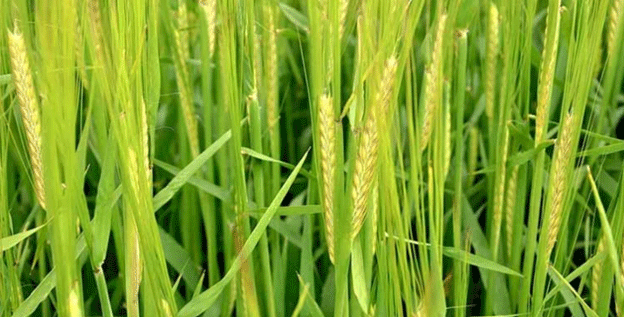Barley cultivation plays a key role in the agricultural economy, especially in regions with favorable climate conditions such as Uttar Pradesh, Rajasthan, Punjab, and Haryana. However, achieving high barley yields requires more than just favorable weather; the correct use of fertilizers, manure, and pest management practices are equally important. In this article, we will dive into the best practices for fertilizer application and crop management to help increase barley yields.
Fertilizer and Manure Use
For optimal barley growth, selecting the right nutrients based on soil fertility is crucial. Fertilizers should be applied in balanced quantities to support robust plant development and maximize yield. The use of well-rotted farmyard manure (FYM) is highly recommended, with about 10-20 tons per hectare applied to enhance soil health.
In irrigated conditions, nitrogen (N) and phosphorus (P) are the primary nutrients needed. For early sown irrigated barley, 60 kg of nitrogen and 30 kg of phosphorus per hectare should be applied. For late sown irrigated barley, the nutrient requirement remains the same. In rain-fed areas, 30-40 kg of nitrogen and 20-30 kg of phosphorus per hectare are adequate for optimal growth.
In terms of application, nitrogen should be applied in two splits: half as a basal dose and the remaining half after the first irrigation or 30 days after sowing. For lighter soils, one-third of nitrogen can be applied at sowing, with additional doses applied after the first and second irrigation.
Intercropping and Weed Management
Barley is a fast-growing crop that naturally competes well with weeds. However, in cases where weed control is needed, selective herbicides can be used. For broadleaf weeds, herbicides such as 2,4-D are effective, with an application rate of 625 grams per hectare. For narrow-leaved weeds like wild oats (Avena fatua), isoproturon is recommended at a dose of 1250 grams per hectare. Herbicide application should be done about 30-35 days after sowing to ensure effective weed control.
Pest and Disease Management
Effective pest management is vital for ensuring healthy barley crops. The powdery mildew (caused by Erysiphe graminis) can be controlled using fine sulfur at 15-20 kg per hectare or 1% Karathen. Copper-based fungicides or Dithane Z-78 are recommended for controlling Helminthosporium leaf spot diseases.
For aphid infestations (Rhopalosiphum maidis), systemic insecticides like methyl demeton or imidacloprid should be applied. Similarly, granular insecticides like phorate or disulfoton can be used in seed drills at a rate of 0.5-1 kg per hectare.
Crop Cleanliness and Roguing
Maintaining uniformity in barley varieties is essential for quality and yield. Roguing, or removing non-conforming plants, should be performed at the boot or pre-flowering stage. A second round of roguing should take place during flowering, with final removal done at maturity to ensure the purity and consistency of the crop.
Harvesting and Yield
Barley typically reaches maturity and is ready for harvesting between the end of March and the first fortnight of April. Due to its tendency to shatter, barley should be harvested early to avoid losses from broken grains. Proper storage in dry conditions is critical, as barley absorbs moisture from the environment and is susceptible to damage from pests.
Under optimal management conditions, rain-fed barley yields range from 2,000 to 2,500 kg per hectare, while irrigated barley can yield up to 5-6 tons per hectare for early sown crops, and 3-3.5 tons per hectare for late sowing. Fertilizer and proper crop management can help improve yield further, ensuring high-quality grains for the market.
Efficient use of fertilizers, timely pest control, and proper management practices are essential for maximizing barley yields. By following expert recommendations and ensuring balanced nutrient application, farmers can significantly improve both the quantity and quality of their barley crops. With careful attention to crop health and optimal growing conditions, barley farming can be a profitable venture in the coming season.
Error




